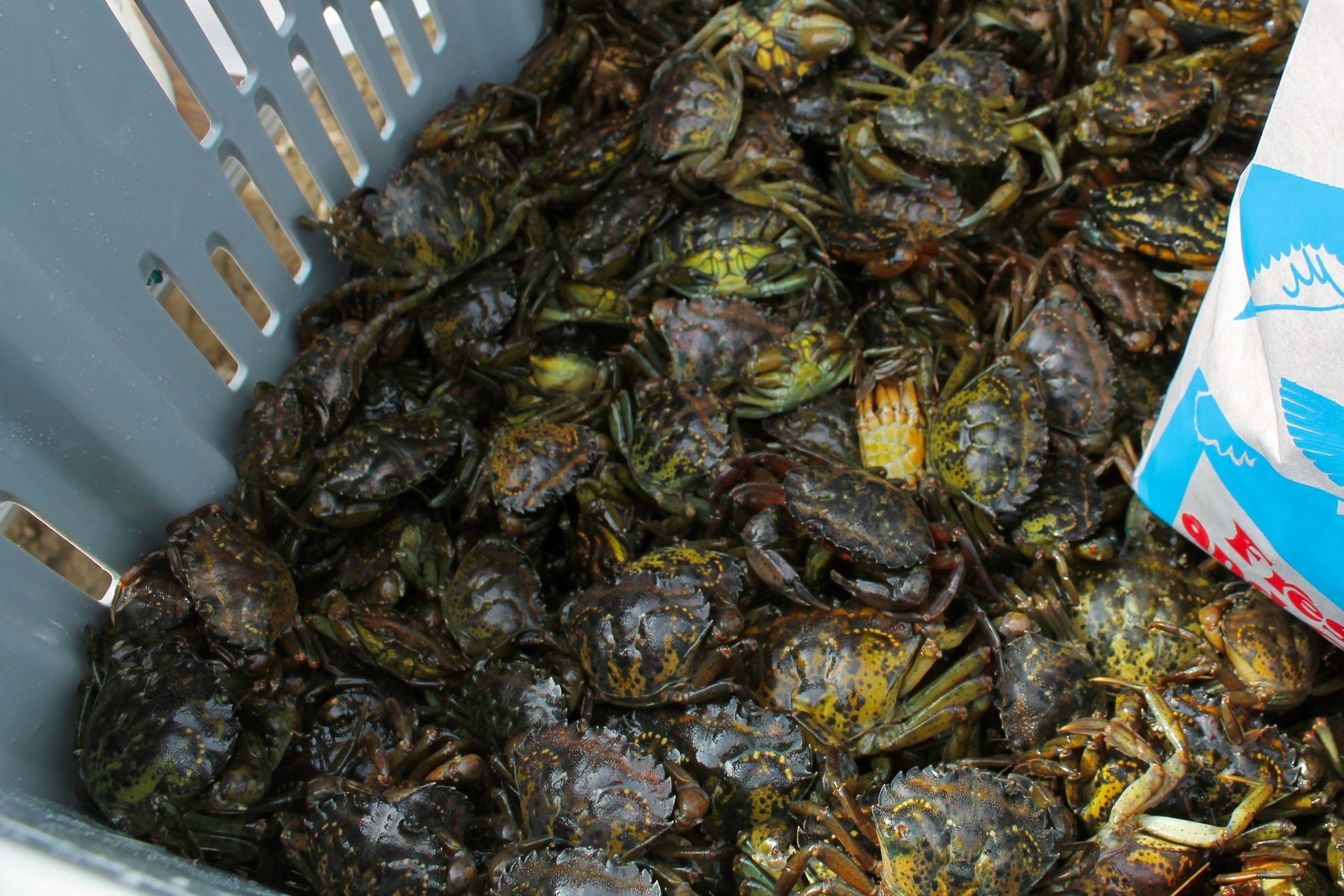
HARVESTING, STORING, AND TRANSPORTING GREEN CRAB FOR CULINARY USE
This guide is intended for harvesters, processors, wholesalers, and fish markets selling green crabs for culinary use. Many green crabs harvested in the US are sold as bait or pet food and aren’t properly chilled or stored for human consumption. These recommendations provide a rough framework for safely storing and transporting green crabs after harvest, incorporating non-species-specific protocols from FoodSafety.gov.
This guide does not serve as a HACCP control plan. Processors, wholesalers, retailers, and harvesters should refer to local, state, and federal regulations for crab harvest, transport, storage, and processing. This guide was last updated on 03/14/2025.
STORING & TRANSPORTING GREEN CRAB AFTER HARVEST
Temperature: Once harvested, live green crabs must be stored below 40°F or 5°C but above freezing (32°F or 0°C)
Containment: Green crabs can survive for weeks out of the water. Proper storage and containment is crucial. To prevent escape & possible reintroduction, ensure green crabs are stored in a sturdy container with air holes. Green crabs can be stored with seaweed but we recommend storing them in a dry environment.
Dockside: Some harvesters will store green crabs in the water in lobster cars/ crates for a short period of time but water temperatures must be cool enough. Do not use this method in the summer and monitor water temperatures to ensure crabs remain below 40°F.
Refrigeration: If storing green crabs in a refrigerator a crab basket, burlap sack, oyster mesh bag, or plastic storage container with holes will work well.
Note on Ice: Do not store green crabs directly on top of ice. Use seaweed or a layer of material to keep the crabs separated from ice. Melted ice (freshwater) can kill crabs.
Transport: It is important that green crabs remain below 40°F during transport. If you do not have a refrigerated vehicle, an insulated ice tote or cooler can be used.
Storage Time: Keep crabs in the fridge or comparably cool space and use them within 1 week.
Freshwater: Green crabs should not come in contact with fresh water unless being cooked immediately after. Freshwater (including melted ice) will kill green crabs.
CHECK FOR QUALITY
Smell: Frequently check the crabs for smell and remove any crabs that perish (a dead crab can spoil the whole bushel). Green crabs used for food should smell fresh and briny, not funky.
Bait Bones: Bones left over from bait and bait bags should not be transported with live green crab. Bait bones can quickly spoil and introduce pathogens to live crabs. After harvest, immediately remove bait bags or bait bones.
Other Species: Bycatch such as sand crabs, spider crabs, blue crabs, fish, or other shellfish should immediately be separated from live green crabs after harvest. Species such as sand crabs are not as hearty as green crabs and can die and spoil your live crabs.
Ask Questions: Make sure your crabs are lively and smell fresh. Ask your harvester or purveyor if your crabs were stored in a cool environment with good ventilation (stored between 40°F/5°C and 32°F/0°C). To learn more about how to safely harvest and process green crabs for culinary use, check out this guide intended for harvesters and wholesalers.
